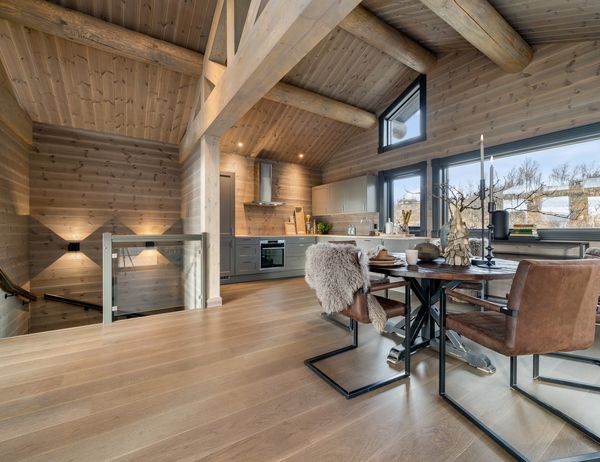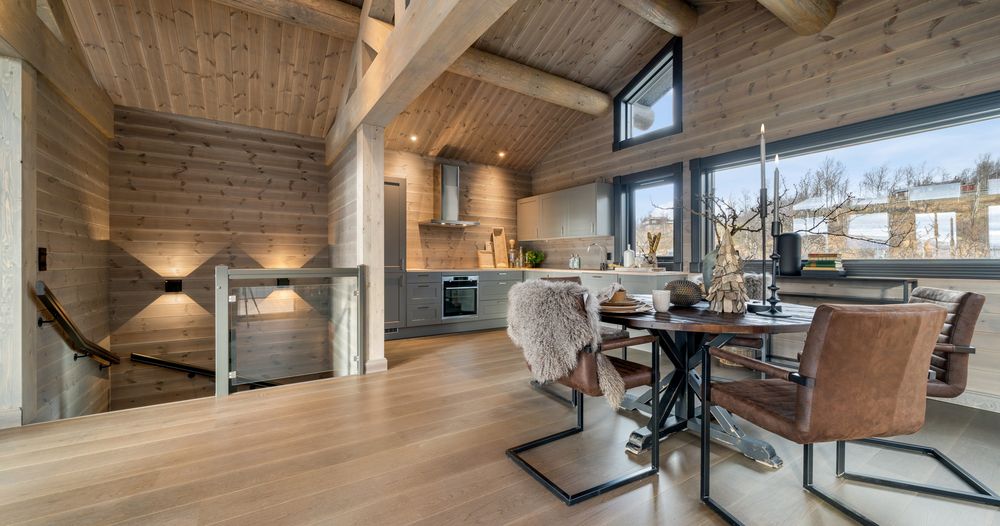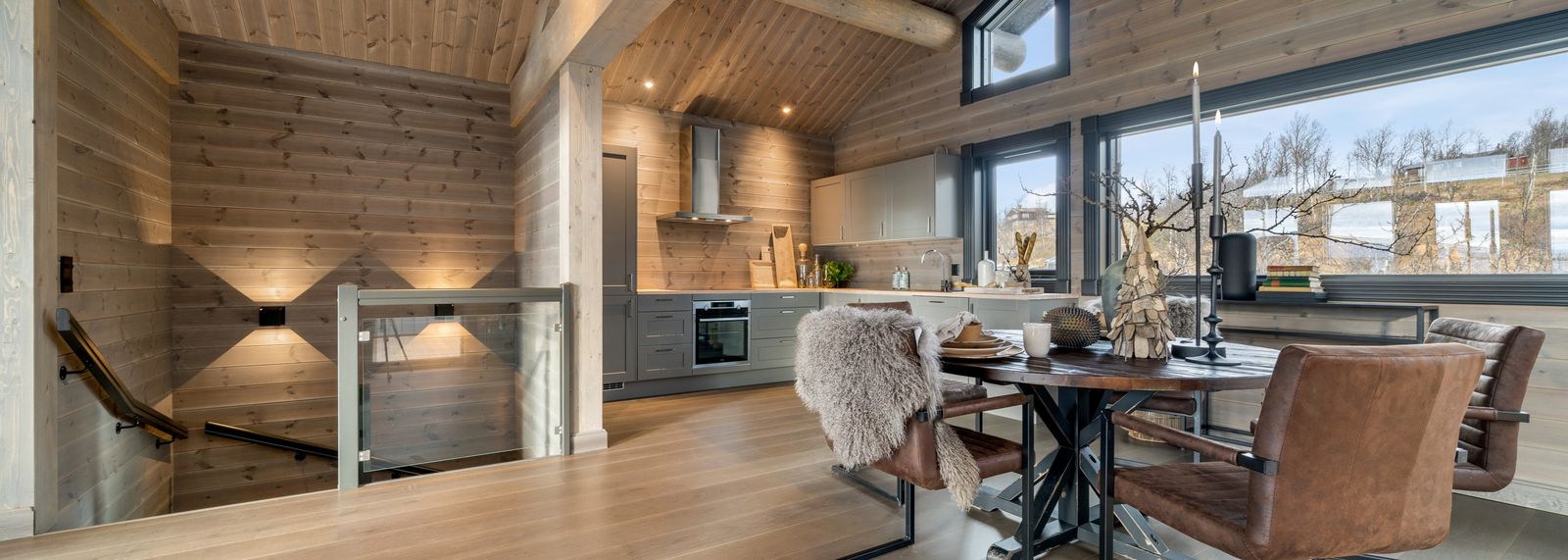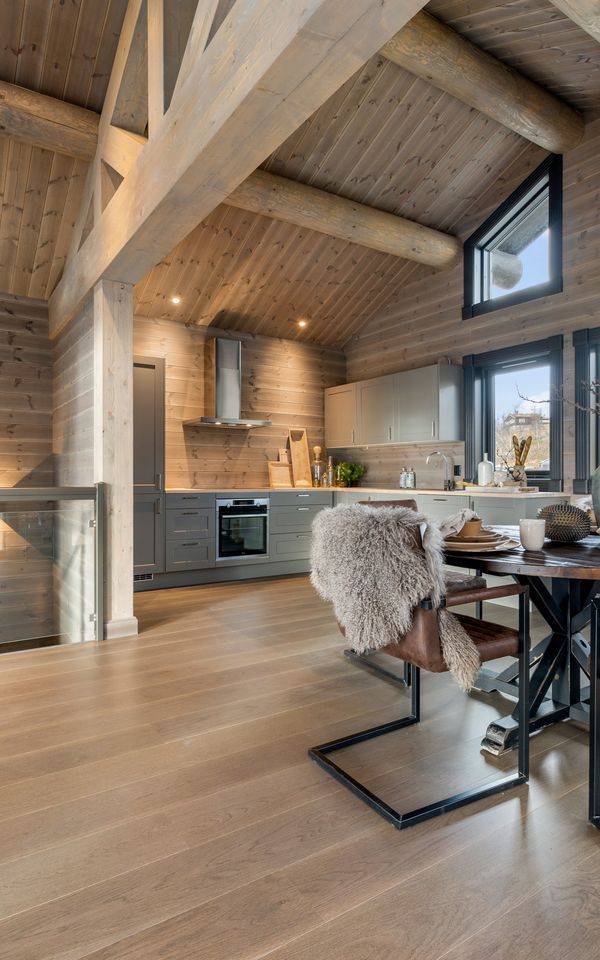
Wood is always good! But which panels should you choose?
The choice of interior panelling is crucial for the look and atmosphere of a room.
From wall panels to ceiling panels, there is a wide range of options – stained or painted, pine or spruce, vertical or horizontal, smooth surface or textured panels.
Wood panelling gives you the freedom to create exactly the expression you want, whether you prefer a modern, minimalist style or a more traditional and warmer cabin feeling. But what factors should you consider before making a choice? Here is an overview of the most important things to bear in mind when choosing an interior panel.
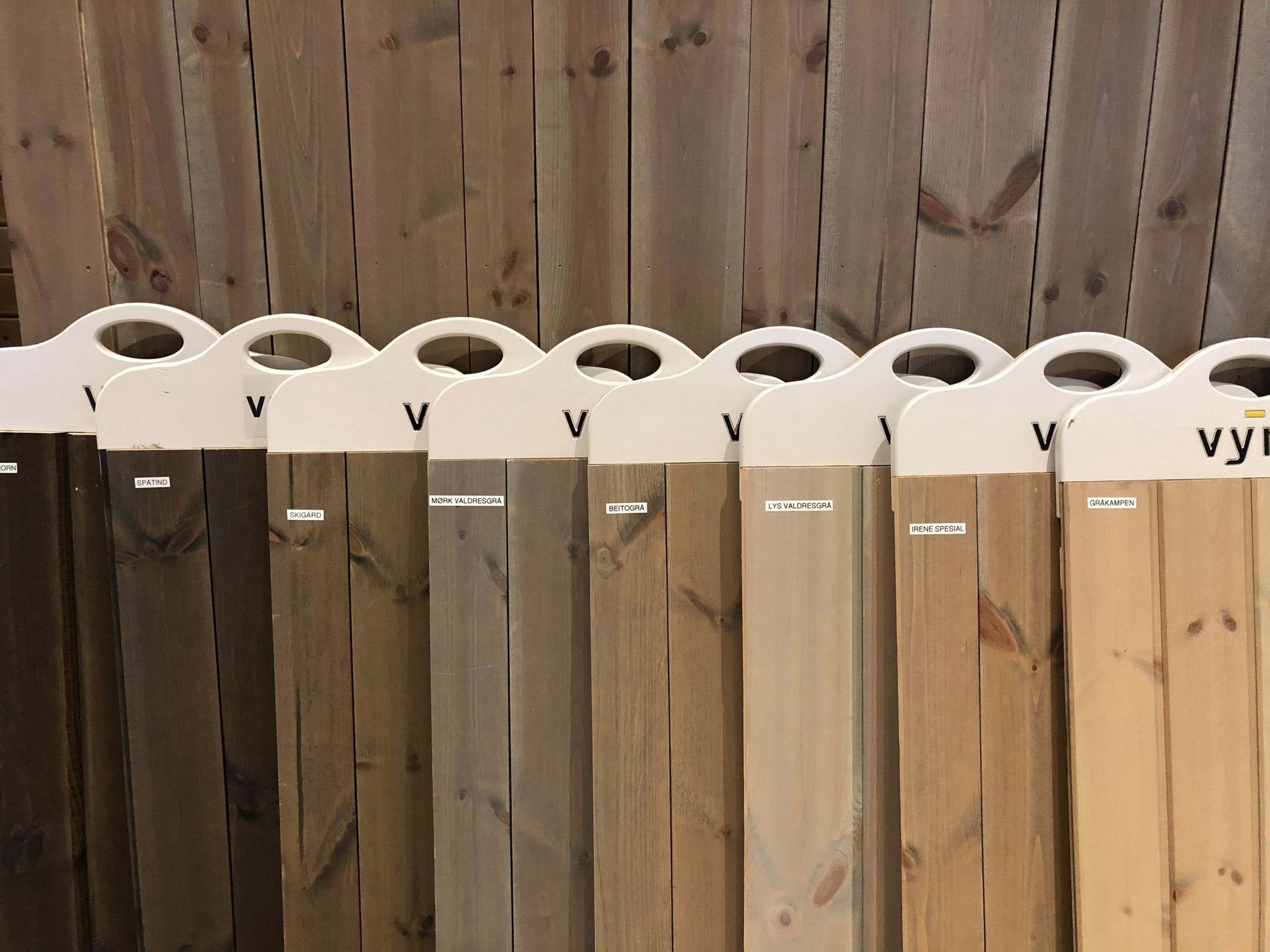
Spruce or pine? Choose the right wood species for your panelling
The first and perhaps most important decision is the choice between spruce and pine, which are the most commonly used wood species for interior panelling in Norwegian homes and cabins.
Spruce
Spruce has no heartwood, which gives the panel a brighter and more uniform look. The knots are smaller and are denser than on pine, resulting in a smoother structure and a calmer appearance on the walls.
Pine
Pine is often recommended when planning surface treatment and is the most commonly used wood species at Vyrk. Pine panelling is more vibrant in its structure, has bigger knots and a characteristic reddish heartwood that adds more personality and warmth to the room.
Remember that wood is a living material! No matter which panel you choose, the wood will change over time. The dimensions of the boards also affect the visual expression of the room – wider boards provide a completely different impression than narrower boards.

Portrait or landscape? The direction affects the sense of space
Panel orientation has a major impact on the visual expression of the room.
Vertical panelling
Vertical panelling is the most common and often easiest method of installation. It gives a feeling of a higher ceiling height and creates an airier and more vertical expression in the room. This is a classic choice that works well in most rooms.
Horizontal panelling
Horizontal panelling can make the room appear wider and give the impression of a larger floor area. However, this method of installation can also make the ceiling height feel lower, which is worth thinking about if you have low ceilings.
The choice of panel orientation should depend on the actual design of the room and what visual impression you want to enhance or counteract.

Trends in panelling – from classic to modern
In recent years, the trend has been towards classic and minimalist panelling types such as smooth panels and shiplap. These types of panels give a calmer expression without prominent profiles and are often used as a cohesive element both on walls and ceilings.
To create more life and dynamism in the wall surfaces, many people now choose panels in different widths. Wood is a natural material, and small colour variations between different dimensions can create an exciting and vibrant dynamic in the room.
In larger rooms, many people prefer rougher and wider panelling, especially in the living room and kitchen. Wider boards create a more robust and traditional feel.
Østerdal panelling and timber panelling are popular choices for those who want to create a classic cabin look. These coarser panel types often mimic old, log cabins and add an authentic and warm atmosphere to the interior.

Coated panels – lasting protection
To achieve an even and lasting result, we recommend industrial application of stain or paint to the panel. This offers several significant advantages:
• Smooth and professional surface that is difficult to achieve by hand
• No visible shrinkage streaks – the stain or paint is applied to the entire panel
• Time-savings – you don't have to do the demanding work yourself
• Significantly improved quality and durability of the finished surface
Do you need help choosing panelling?
We are happy to help you find the perfect type! Contact our advisors for more information about different panelling types, colour options and surface treatment that suits your project.


